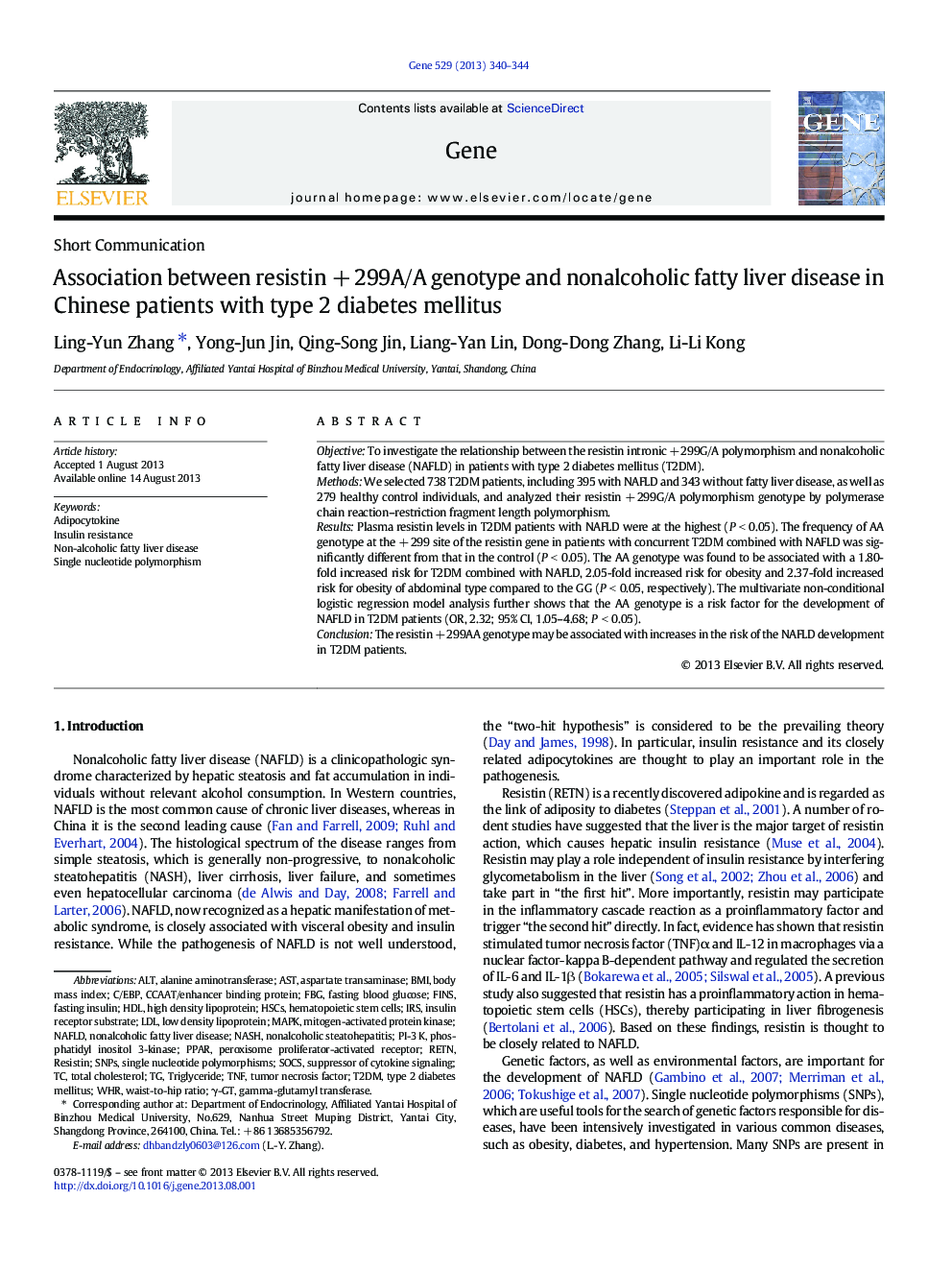| Article ID | Journal | Published Year | Pages | File Type |
|---|---|---|---|---|
| 5906184 | Gene | 2013 | 5 Pages |
â¢Resistin gene polymorphism was studied by PCR-RFLP.â¢+ 299 AA genotype increases the risk of incidence of T2DM combined with NAFLD.â¢+ 299 AA genotype increases the risk of NAFLD incidence in T2DM patients.â¢+ 299 AA genotype increases the risk of obesity and obesity of abdominal type.
ObjectiveTo investigate the relationship between the resistin intronic +Â 299G/A polymorphism and nonalcoholic fatty liver disease (NAFLD) in patients with type 2 diabetes mellitus (T2DM).MethodsWe selected 738 T2DM patients, including 395 with NAFLD and 343 without fatty liver disease, as well as 279 healthy control individuals, and analyzed their resistin +Â 299G/A polymorphism genotype by polymerase chain reaction-restriction fragment length polymorphism.ResultsPlasma resistin levels in T2DM patients with NAFLD were at the highest (PÂ <Â 0.05). The frequency of AA genotype at the +Â 299 site of the resistin gene in patients with concurrent T2DM combined with NAFLD was significantly different from that in the control (PÂ <Â 0.05). The AA genotype was found to be associated with a 1.80-fold increased risk for T2DM combined with NAFLD, 2.05-fold increased risk for obesity and 2.37-fold increased risk for obesity of abdominal type compared to the GG (PÂ <Â 0.05, respectively). The multivariate non-conditional logistic regression model analysis further shows that the AA genotype is a risk factor for the development of NAFLD in T2DM patients (OR, 2.32; 95% CI, 1.05-4.68; PÂ <Â 0.05).ConclusionThe resistin +Â 299AA genotype may be associated with increases in the risk of the NAFLD development in T2DM patients.
